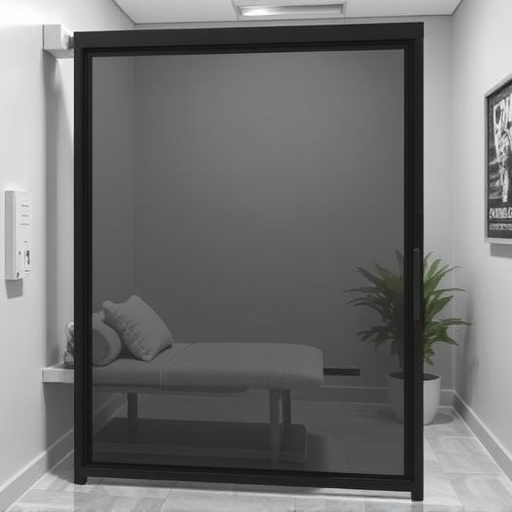Heat shields are vital for Spectre cold air intake kits, preventing premature air cooling and facilitating denser air-fuel mixtures for improved combustion and power output. These shields optimize engine cooling, reduce exhaust system temperature, and protect sensitive components from thermal stress, enhancing both heat shield longevity and overall cooling system efficiency. Evaluating their effectiveness combines advanced CFD simulations with physical testing, ensuring optimal performance in high-performance vehicles equipped with Spectre kits.
In the realm of automotive performance, heat shield effectiveness is a critical component often overlooked. This article explores the intricate role of heat shields in engine functionality, with a specific focus on the impact of Spectre Cold Air Intake Kits. We delve into comprehensive evaluation methods to assess their performance, highlighting key metrics and testing procedures. Understanding these factors is essential for enthusiasts seeking to optimize their vehicles, especially when considering complete Spectre cold air intake kits as potential upgrades.
- Understanding Heat Shield Functionality and its Role in Engine Performance
- The Impact of Spectre Cold Air Intake Kits on Heat Shield Effectiveness
- Comprehensive Evaluation Methods for Assessing Heat Shield Performance
Understanding Heat Shield Functionality and its Role in Engine Performance

Heat shield functionality is a critical aspect often overlooked in engine performance discussions, yet it plays a pivotal role in optimizing power and efficiency, especially with Spectre cold air intake kits complete. These heat shields are designed to insulate and protect vital components from excessive heat generated during combustion, ensuring optimal air flow into the engine. By managing heat transfer, they prevent premature air cooling, allowing for denser air-fuel mixture, which leads to enhanced combustion and increased power output.
In vehicles equipped with high-performance cold air intake systems, like Spectre kits, the role of heat shields becomes even more evident. As cold, clean air is drawn directly from outside the engine compartment, it’s crucial to maintain its temperature to support efficient combustion. Heat shields act as a barrier between the intake air and the hot engine components, ensuring the incoming air remains cool and dense, thereby maximizing power gains and overall engine performance.
The Impact of Spectre Cold Air Intake Kits on Heat Shield Effectiveness

The addition of Spectre cold air intake kits can significantly enhance a vehicle’s heat shield effectiveness, particularly in high-performance cars and trucks. These kits are designed to optimize engine cooling by directing cooler, denser air directly into the combustion chamber. This not only improves engine performance but also reduces the overall temperature of the exhaust system, which is a key factor in maintaining optimal heat shield integrity.
By diverting intake air from the engine bay’s hot components, Spectre cold air intake kits help to prevent heat transfer to sensitive areas, such as the catalytic converter and exhaust manifold. This is especially crucial for vehicles that frequently operate under heavy load or in extreme environmental conditions. The result is a more efficient cooling system, leading to improved heat shield longevity and reduced risk of damage due to thermal stress.
Comprehensive Evaluation Methods for Assessing Heat Shield Performance

In evaluating the effectiveness of a heat shield, especially for applications like Spectre cold air intake kits complete, a comprehensive approach is essential. This involves a multi-faceted methodology that combines both analytical and practical testing methods. Engineers utilize advanced computational fluid dynamics (CFD) simulations to predict heat transfer characteristics under various conditions, offering a detailed digital blueprint of the shield’s performance. These simulations are invaluable in understanding temperature distribution across the shield and identifying potential weak points or areas of improvement.
Beyond numerical modeling, physical testing plays a pivotal role. Lab experiments expose the heat shield to controlled high-temperature scenarios, subjecting it to rigorous conditions that mimic real-world usage. This includes tests like steady-state thermal performance assessment and dynamic heat flux measurements to gauge the shield’s ability to withstand sudden temperature spikes. Additionally, material property analysis ensures the integrity of the shield’s composition, checking for dimensional stability, thermal conductivity, and resistance to degradation over time. These comprehensive evaluation methods collectively provide a holistic understanding of the heat shield’s effectiveness, ensuring optimal performance in applications such as cold air intake kits.
In conclusion, evaluating heat shield effectiveness is paramount in enhancing engine performance, especially with modifications like Spectre cold air intake kits. The comprehensive assessment methods discussed ensure optimal results, highlighting the critical role of heat shields in maintaining efficient and reliable vehicle operation. For those considering upgrades, understanding these dynamics is key to making informed decisions regarding their Spectre cold air intake kits complete.














